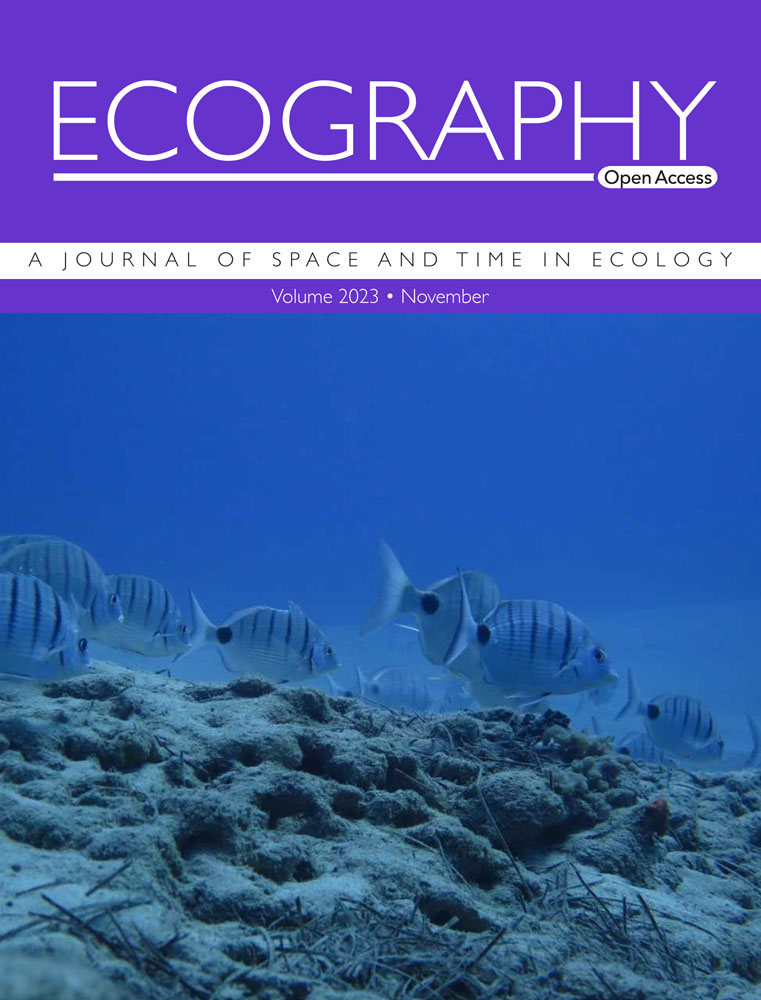Of all shapes and sizes: a theoretical framework for animal-mediated terrestrial heterogeneity across scales
IF 5.4
1区 环境科学与生态学
Q1 BIODIVERSITY CONSERVATION
引用次数: 0
Abstract
Animals redistribute elements throughout their lives by depositing wastes and carcasses. Growing evidence shows that these zoogeochemical processes enhance landscape diversity and heterogeneity worldwide. We provide a descriptive framework for understanding how direct animal depositions (i.e. fecal matter, urine, carcasses, and other body materials) contribute to element heterogeneity across scales, with particular focus on how a species' contributions differ relative to one another. In this framework, we identify mean body mass and population density as the main predictors of element heterogeneity. Secondary predictors, including population strategy, overabundance, habitat preference, elemental composition and predation, are nested within and influenced by body size and density. We then demonstrate how animals can play unique roles within communities, leading to multiscale patterns of elemental heterogeneity within an ecosystem. In doing so, we highlight the importance of studying zoogeochemistry through both an ecosystem ecology and community ecology lens. We illustrate our framework using three spatial scales of animal communities (100 cm2, 100 m2, 100 km2) within an eastern temperate forest, considering both individual species traits and their community interactions at each scale. The community heterogeneity framework provides a theoretical understanding of how individual species and animal communities collectively drive element heterogeneity, allowing a predictive mechanism for the ecosystem contributions of animals across systems and scales.所有形状和大小:动物介导的跨尺度陆地异质性的理论框架
动物在其一生中通过排泄废物和尸体来重新分配元素。越来越多的证据表明,这些动物地球化学过程增强了世界范围内景观的多样性和异质性。我们提供了一个描述性框架来理解动物的直接沉积(即粪便、尿液、尸体和其他身体物质)是如何促成跨尺度的元素异质性的,特别关注一个物种的贡献是如何相互不同的。在这个框架中,我们确定平均体重和人口密度是元素异质性的主要预测因子。次要预测因子,包括种群策略、过剩度、生境偏好、元素组成和捕食,均嵌套于体型和密度内并受其影响。然后,我们展示了动物如何在群落中发挥独特的作用,从而导致生态系统中元素异质性的多尺度模式。在此过程中,我们强调了通过生态系统生态学和群落生态学视角研究动物地球化学的重要性。我们使用东温带森林中动物群落的三个空间尺度(100 cm2, 100 m2, 100 km2)来说明我们的框架,同时考虑了每个尺度上的个体物种特征及其群落相互作用。群落异质性框架提供了对单个物种和动物群落如何共同驱动元素异质性的理论理解,允许跨系统和尺度的动物生态系统贡献的预测机制。
本文章由计算机程序翻译,如有差异,请以英文原文为准。
求助全文
约1分钟内获得全文
求助全文
来源期刊

Ecography
环境科学-生态学
CiteScore
11.60
自引率
3.40%
发文量
122
审稿时长
8-16 weeks
期刊介绍:
ECOGRAPHY publishes exciting, novel, and important articles that significantly advance understanding of ecological or biodiversity patterns in space or time. Papers focusing on conservation or restoration are welcomed, provided they are anchored in ecological theory and convey a general message that goes beyond a single case study. We encourage papers that seek advancing the field through the development and testing of theory or methodology, or by proposing new tools for analysis or interpretation of ecological phenomena. Manuscripts are expected to address general principles in ecology, though they may do so using a specific model system if they adequately frame the problem relative to a generalized ecological question or problem.
Purely descriptive papers are considered only if breaking new ground and/or describing patterns seldom explored. Studies focused on a single species or single location are generally discouraged unless they make a significant contribution to advancing general theory or understanding of biodiversity patterns and processes. Manuscripts merely confirming or marginally extending results of previous work are unlikely to be considered in Ecography.
Papers are judged by virtue of their originality, appeal to general interest, and their contribution to new developments in studies of spatial and temporal ecological patterns. There are no biases with regard to taxon, biome, or biogeographical area.
 求助内容:
求助内容: 应助结果提醒方式:
应助结果提醒方式:


